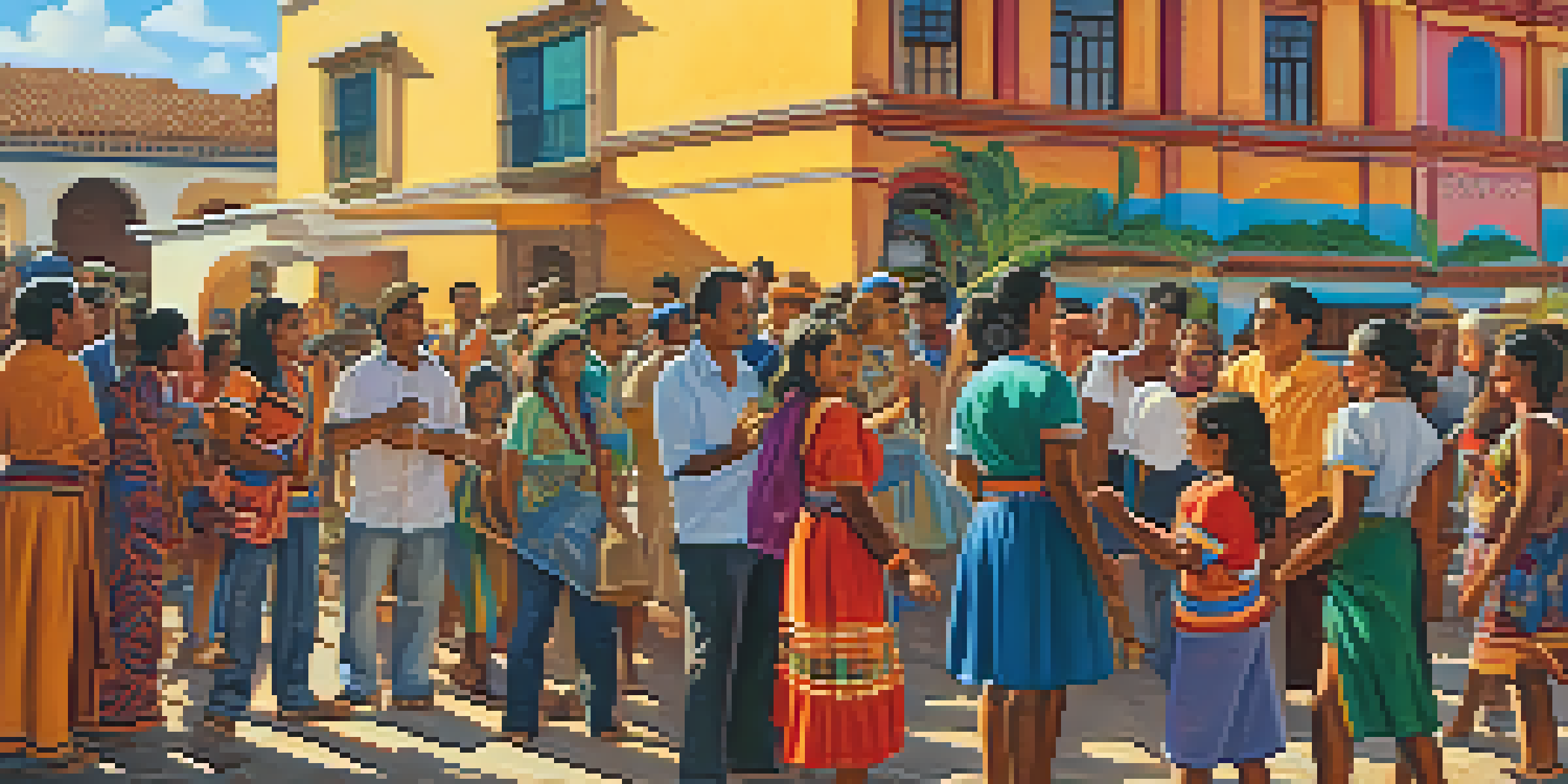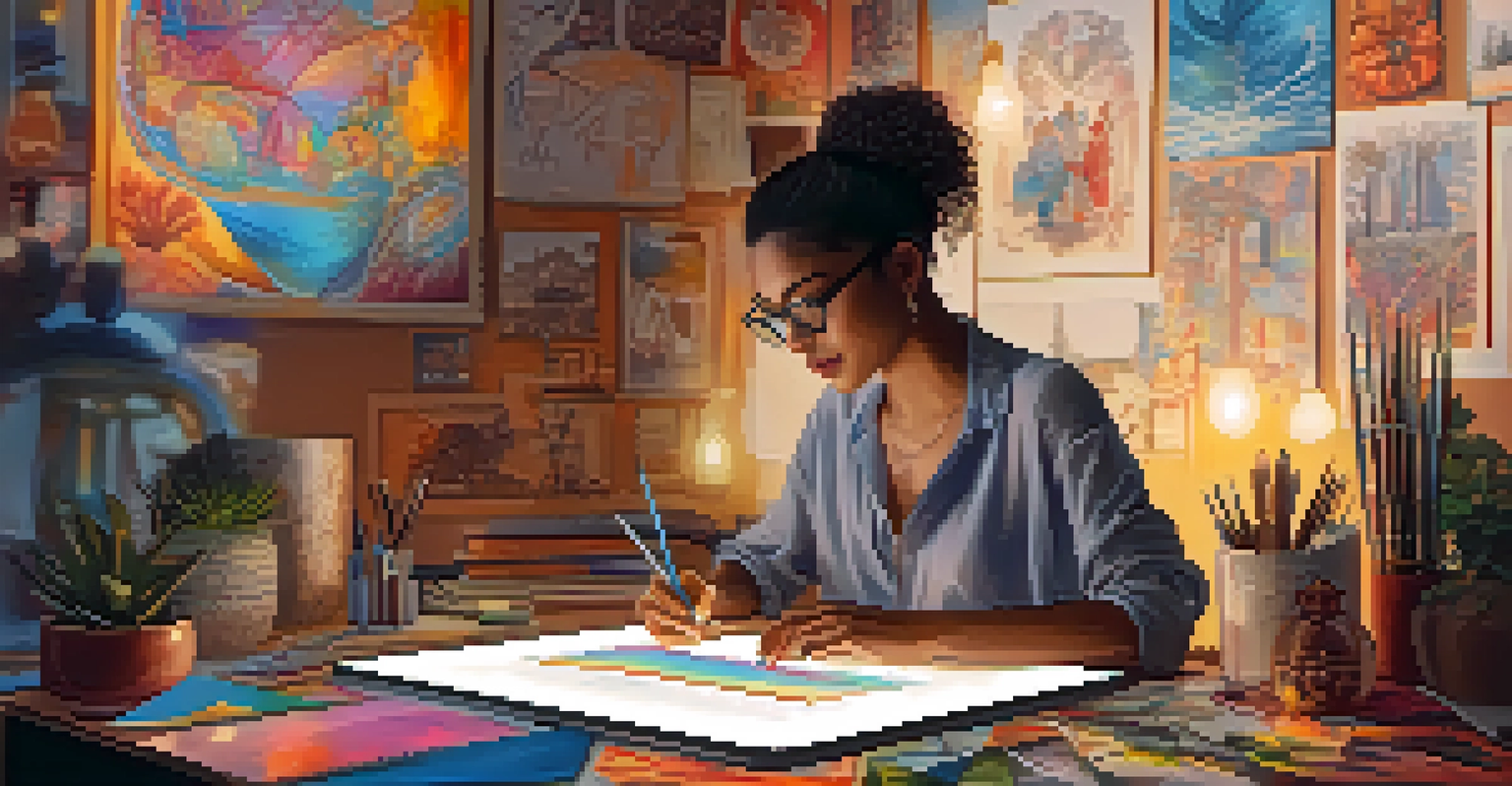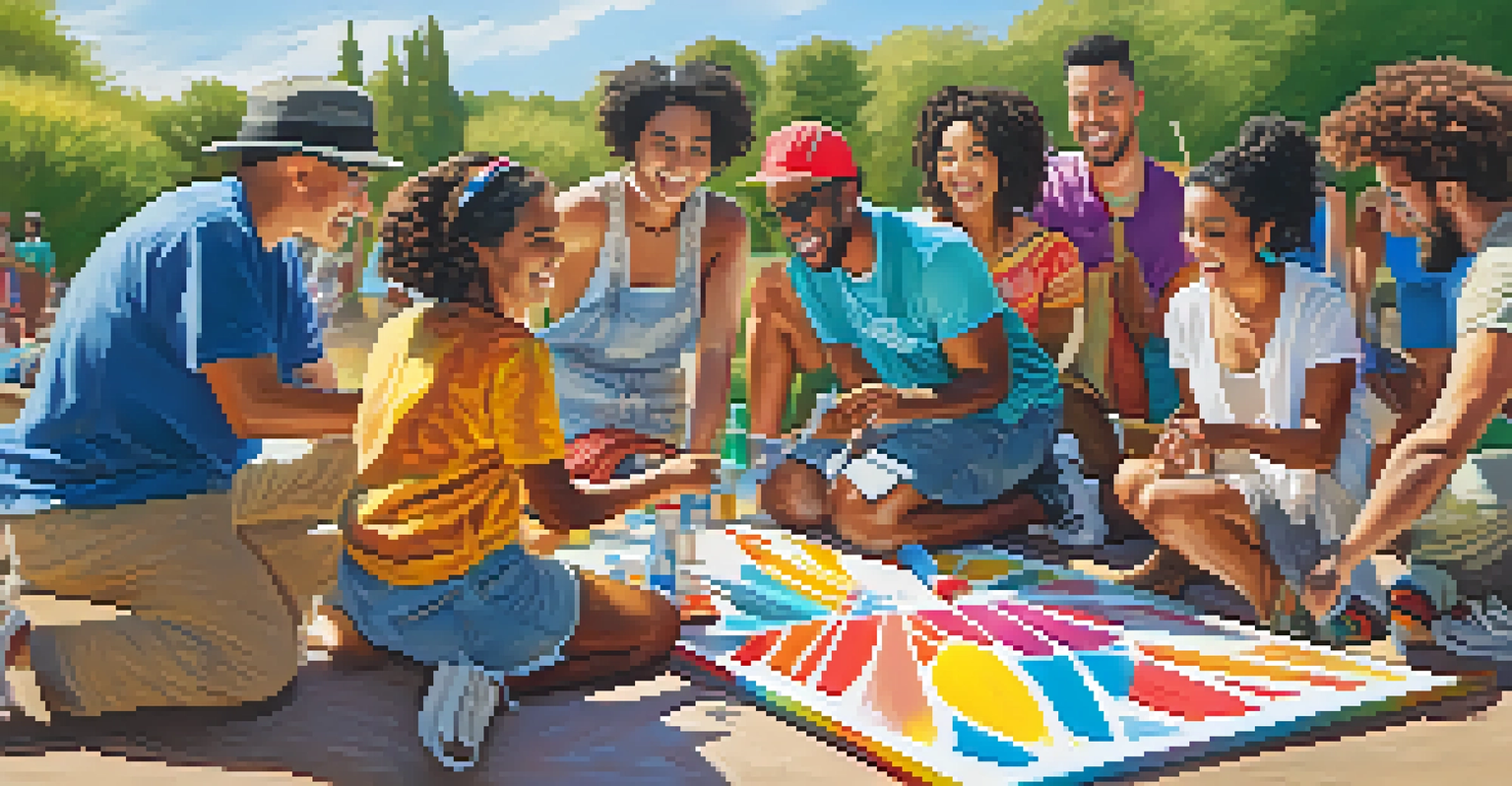Art as Resistance: Cultural Identity in Times of Change

Understanding Art as a Form of Resistance
Art has long been a means for individuals and communities to express their dissent and resilience. Throughout history, artists have used their work to challenge oppressive regimes and societal norms. By reflecting the struggles and triumphs of marginalized voices, art can provoke thought and inspire action.
Art is a weapon in the struggle for freedom.
Consider the mural movements in Latin America, where vibrant colors and bold imagery tell stories of social injustice and cultural pride. These artworks not only beautify public spaces but also serve as a visual protest against inequality. As a result, art becomes a bridge connecting history, identity, and resistance.
Related Resource
In times of upheaval, art can empower individuals to reclaim their narratives and assert their cultural identity. This transformation is essential in fostering a sense of belonging and solidarity among communities facing adversity.
Cultural Identity: A Pillar of Artistic Expression
Cultural identity shapes the lens through which artists view the world. It encompasses the traditions, languages, and experiences that define a community, and this rich tapestry often finds its way into artistic expression. For many artists, their work becomes a medium for exploring and celebrating their heritage.

Take, for instance, the art of indigenous peoples, which often incorporates traditional symbols and practices. These artworks are not merely decorative; they hold deep meanings connected to the community's history and values. By showcasing their cultural identity through art, these creators resist cultural erasure and assert their place in contemporary society.
Art as a Voice for Resistance
Art serves as a powerful tool for individuals and communities to express dissent and resilience against oppression.
Thus, cultural identity not only informs the subject matter of artistic works but also serves as a source of strength and resilience in the face of change.
Art Movements as Catalysts for Change
Throughout history, certain art movements have emerged as powerful catalysts for social change. For instance, the Harlem Renaissance celebrated African American culture and challenged racial stereotypes through literature and visual arts. This movement not only uplifted black voices but also reshaped the broader cultural landscape.
The role of the artist is to make the revolution irresistible.
Similarly, the Feminist Art Movement sought to address gender inequalities and promote women's perspectives in the art world. By creating works that highlighted women's experiences, artists reclaimed their narratives and challenged the male-dominated art establishment. These movements showcase how art can spark dialogue and inspire collective action.
Related Resource
Ultimately, art movements can galvanize communities and encourage individuals to engage with critical social issues, making them essential components of cultural resistance.
The Role of Digital Art in Modern Resistance
In today's digital age, art has found new platforms for expression and resistance. Social media allows artists to share their work with a global audience, amplifying their messages and fostering connections across cultures. This democratization of art has empowered many to use their creativity as a tool for activism.
For instance, digital art can be a powerful medium for raising awareness about social injustices, as seen in campaigns that combine visual art with impactful storytelling. Artists can create compelling graphics and videos that go viral, reaching audiences far beyond traditional art galleries.
Cultural Identity Fuels Creativity
Cultural identity shapes artistic expression, allowing artists to celebrate their heritage and resist cultural erasure.
Thus, digital art serves as a modern extension of cultural resistance, providing both a voice and a platform for those advocating for social change.
The Intersection of Art and Politics
Art and politics have always been intertwined, with each influencing the other. Political movements often inspire artistic expression, while art can shape political discourse. From protest songs to politically charged street art, creators have historically used their craft to comment on and critique the status quo.
Consider the powerful imagery associated with the anti-apartheid movement in South Africa, where artists used their work to call for justice and equality. These pieces became symbols of resistance, galvanizing support both locally and internationally. Such examples illustrate how art can transcend boundaries and communicate urgent messages.
Related Resource
In this way, the intersection of art and politics serves as a potent reminder of the role creativity plays in shaping societal values and driving change.
Art as a Means of Healing and Empowerment
In times of crisis or upheaval, art can provide solace and healing for individuals and communities. Engaging in creative expression allows people to process their emotions, share their stories, and connect with others who have faced similar struggles. This therapeutic aspect of art can be particularly powerful in the context of cultural identity.
For example, community art projects often bring together individuals from diverse backgrounds to collaborate on shared artistic endeavors. These initiatives not only foster connections but also empower participants to reclaim their narratives and express their cultural identities. The act of creating together can be a transformative experience.
Digital Platforms Empower Artists
In the digital age, artists utilize social media to amplify their messages and connect with a global audience for social change.
Ultimately, art serves as a healing balm, helping individuals and communities navigate the challenges of change while reinforcing their cultural identity.
Embracing the Future of Art and Cultural Identity
As we look to the future, the role of art in cultural identity and resistance will continue to evolve. With emerging technologies and shifting societal norms, artists will find new ways to express their experiences and advocate for social change. This adaptability is essential in a world that is constantly changing.
Moreover, the increasing recognition of diverse voices and narratives in the art world suggests a promising shift towards inclusivity and representation. As more artists from underrepresented backgrounds gain visibility, their stories will enrich the cultural landscape and inspire future generations.

In conclusion, embracing the future of art means acknowledging its power as a tool for resistance and a vehicle for cultural identity. By supporting and celebrating diverse artistic expressions, we can foster a more inclusive and vibrant society.